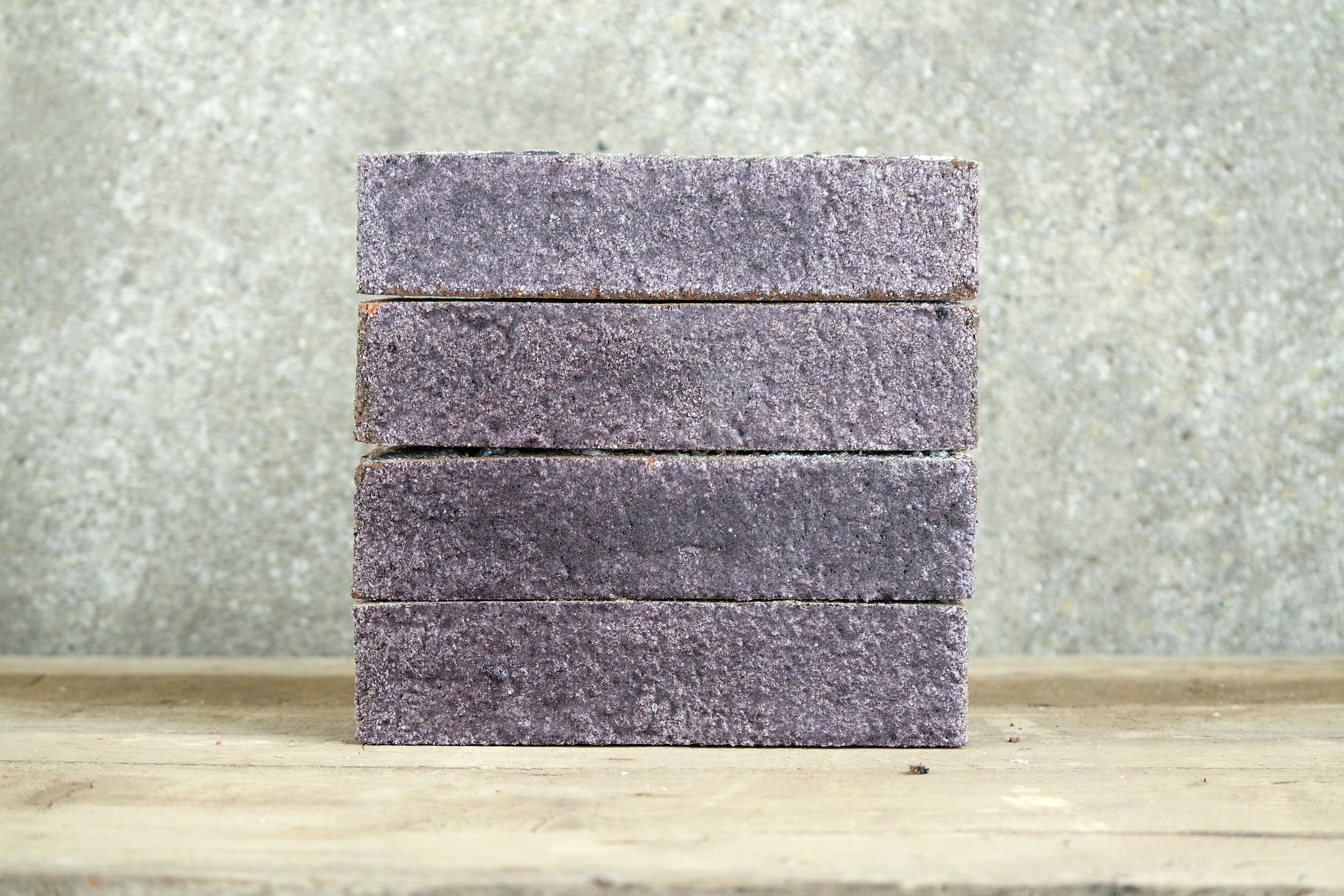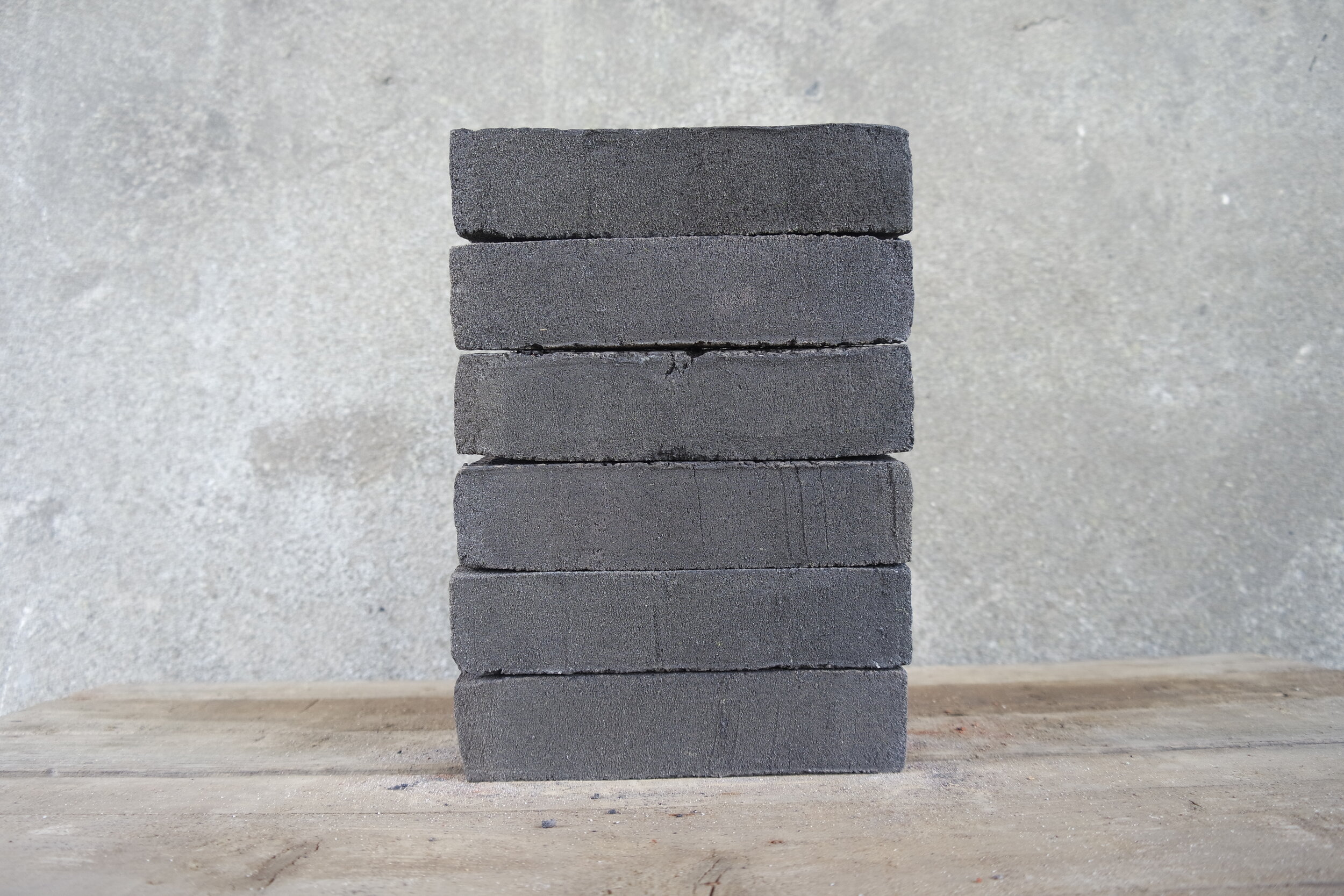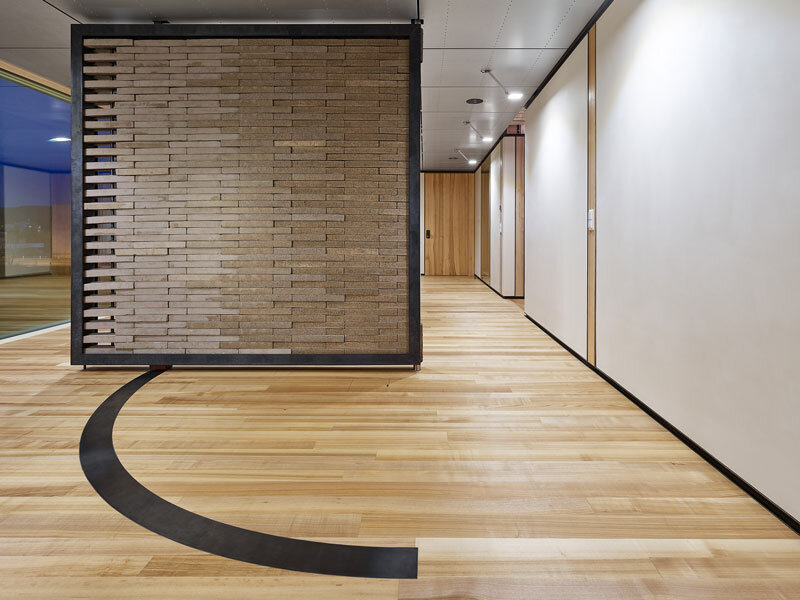StoneCycling

High-quality and beautiful building materials from waste.
Website: stonecycling.com
Founded date: 2012
Country HQ: Netherlands
Business model: B2B
Industry: Construction materials
Applications: Bricks, Pavements, Interiors
Team size: 7
Founders: Ward Massa & Tom van Soest
Ward Massa & Tom van Soest - Founders StoneCycling
YOUR JOURNEY TO FOUNDING
I am 35 years old, I don’t have a background in building materials, but I studied digital communication science and political science in Utrecht, Amsterdam and for two years in India. Already at the age of 18 I started to experiment with small businesses. I had a previous company where we published a magazine and a design studio together with my current business partner Tom.
Once I graduated, Tom approached me and said he was working on this new idea and we should do it together. That’s when we started Stonecycling. I am the General Director, so responsible for everything beside the product development, while my co-founder Tom is in charge of product development and design.
The company started in 2012, but it was only in 2014 that we started working full on the company and got investors onboard to build where we are right now.
THE INNOVATION
When did you understand what problem you wanted to tackle?
Normally in presentations we would say it started during the economic crisis, by which we mean the financial crisis of 2008. Today, however, we already find ourselves in the next crisis. In 2010, when my co-founder Tom was graduating from the Design Academy in Eindhoven, it was the peak of the economic crisis in the Netherlands, especially in the real estate sector. Given that many companies failed, there was too much floor space available in the market so a lot of it, especially office floor space, had to be demolished.
Tom started doing research in this, because he was curious about what was actually happening to these buildings when they were being demolished. On one side he investigated more on what kind of material was available and what you can do with it and on the other on how much was available.
And what did you find out?
Construction and demolition is the biggest waste stream in the Netherlands and in most European countries - something between 30% and 40%. Only in the Netherlands, it’s 25 million tons each year. If you go to the UK or other European countries, you’ll find something similar. And if you are in a country with frequent earthquakes, like Turkey or China, then this percentage even goes up. In Dubai, it’s 70% of all waste.
“Construction and demolition is the biggest waste stream in The Netherlands and most European countries”
If you start looking at what is actually happening to these materials, then you see that most of them are being crushed into granulate and then used for road beds or buildings foundations. In Western countries we don’t build that many roads anymore, so there is really no use for those materials - they end up in huge piles, in landfills or exported to other countries.
Waste pile as raw materials (Credit Dim Balsem)
So, here is where you wanted to contribute as Stonecycling?
We thought: there needs to be a better solution for this. We also saw that the virgin materials you need to make new building materials—such as clay and sand— are not so much available anymore in the world. If you look at construction sand, for instance, it needs to have specific technical properties. Experts believe that within 10 years there will be a shortage of sand, and already in the past few years we have seen a sand mafia going on, especially in Asia, with illegal mining just to keep up with construction worldwide.
So, one side there is a growing pile of waste, while on the other raw material are becoming more and more scarce. That’s where we came in to combine the two: if we can make new sustainable building materials from waste, we clean up some of the mess and we decrease the need for virgin raw materials. This is the old theory behind Stonecycling.
“If we can make new sustainable building materials from waste, we clean up some of the mess and we decrease the need for virgin raw materials”
What solutions are you working on to solve the problem?
We are developing new building materials out of construction waste. We also figured out that everybody finds sustainable things sympathetic, but if you try to sell it, you find out that people first and foremost want to buy beautiful things. So we are focusing equally on sustainability and design. We fully believe this combination can be successful. If you make something beautiful out of waste, people will buy it. If you create something ugly, maybe some people will buy it, but not a lot.
Raw materials (Credit Dim Balsem)
Production process (Credit Dim Balsem)
What is the first product you created?
The first product is the waste-based brick, a brick made out of 60% waste, in all different colours and textures. We now sell it quite successfully and are working on a second product for pavements outdoors. This will be made out of 85% waste and decrease CO2 emissions by 45%. And more products will follow to add to that mission. We make visible building materials, not to be covered up, because we believe in this way it will help real estate developers and architects with their sustainability agenda.
Architects are the main targets for our products, because they are at the core of the design process. Since the beginning, we are in an open conversation with them to get feedback on our products and get new ideas to design differently.
Waste Based Bricks (Credits Dim Balsem)
I see they are very beautiful bricks. In terms of functionality, are they as good as bricks made with virgin materials, even though they are made 60% out of waste?
We developed the brick in such a way that it has similar or superior properties to normal bricks; they are a little bit stronger and the water intake is lower. Technical properties are really good and we also sell the with a standard factory warranty. For production, we teamed up with existing brick factories in the Netherlands. In this way, our go-to-market time was quicker and we also noticed that construction companies like to deal with companies that have already been around for 100 years as it gives them a sense of confidence. This has been working quite well, and we are now producing and selling with our partners, creating revenues for them as well as for us. This also creates an extra space for investment and innovation to, maybe, get to 80% waste or different waste streams and properties. This is step-by-step innovation.
Initially, we created a product with 100% waste. But when we went to the market, we noticed what’s important for construction companies. In the Netherlands, if a construction company makes a building, they are responsible for the quality of the building for at least 10 years. This implies that they prefer to work with materials that the already know, because they know how they behave. We see so many initiatives in the market today for building materials, and I think what companies generally underestimate is that it’s one thing to develop a new product, but it’s another to develop it in such a way that people feel comfortable buying it.
So going from 100% waste to 60% waste was not due to the product not being functional enough, but rather due to more pragmatic and ‘reputational’ motives?
It had mainly to do with the production facilities available and the fact that in those factories materials need to have certain properties to go through production. That’s why we said let’s lower it from 100% to 60%, gain more and more experience, and now we are slightly increasing it again.
Currently production is happening in two factories in the Netherlands, but our vision is to find production partners close to where we are selling and do the same thing with local waste. In the Netherlands we gather all the knowledge about working with waste and making new building materials with it, but then we always find an existing production company in a certain market. For instance, now we’ve almost completed one project in New York, which is quite far from the Netherlands if you make bricks. As we are getting more and more requests from the US, our next step will be to find a production partner there.
VALUE IN CIRCULAR TRANSITION
For us, the design element is fundamental for a circular economy transition. Over the last years we have seen, especially amongst designers, that many are trying to create furniture from waste, but in most cases you can actually see that’s made from waste. We believe this style of showing that is made from waste is too trend-sensitive; people like it now, but maybe not in 5 years. That’s why we said that if we want to use waste as a serious alternative to raw materials, we need to be able to make beautiful products out of it, which can also look like a new product. I think this is our main contribution: showing by the buildings that are being constructed that you can do something that is beautiful from waste and you don’t necessarily see it’s made from waste.
“If we want to use waste as a serious alternative to raw materials, we need to be able to make beautiful products out of it”
And what about the impact for the construction industry?
We are a small company and if you talk about actual impact, it’s of course very limited. Even if we make millions of bricks, there are factories out there that make billions of bricks. But, us doing this and showing that is possible and that there is market interest for it, will eventually lead to companies copying us. If brick manufacturers start copying us in 3-5 years, that’s totally fine. Let them develop mass products from waste, while we focus on high-quality, high-design products. That’s a niche we are comfortable in, because also in terms of cost price there is enough space to try new things. I think the real impact will come from these big companies starting copying us. If in 5-10 years people will look back and say that the whole industry has changed by copying Stonecycling, that would be the biggest compliment for us.
Copying you as a compliment, rather than a threat..that’s a great message.
It needs to be like that because we will never be a big company like the big brick companies in the world, and we also don’t have that ambition. If you want to be the biggest, you’ll never be flexible. If you are small and work in a niche, you get the types of clients that want to experiment, you get the budget that allows for experiments, and that’s where we can innovate and show what is possible. This is what keeps Stonecycling fresh and flexible also for the future.
Where can we see Stonecycling bricks nowadays?
We just counted few weeks back, and it’s already in 15 countries from very small projects to slightly bigger projects. We have projects in Netherlands, UK, Romania, US, Germany, Austria, Belgium, Spain - most of them are still small, and most of them are interior projects, because interior projects move way faster that a complete building. The current project in New York is for a big building, it’s over 260,000 kg of waste that gets a new life, and we are starting two more of these projects, one in Amsterdam and one in London. So, now, also the big buildings are coming out.
Facade on 11th Avenue, New York (Credit: The West)
Bar Ramona Amsterdam - Studio Modijefsky (Credits Designboom)
Floor Tech Company, Amsterdam (StoneCycling)
UMAR StoneCycling Wall, Switzerland (Copyright Zooey Braun)
Starbucks Norman Park, Belvedere UK (StoneCycling)
FUTURE PLANS
Our mission is to move towards building materials made of 100% waste with a positive carbon impact. So all products that we are developing should contribute to that goal. Right now we are focusing on improving the waste-based bricks and coming up with a second product for pavements. We are also really interested in making products in such a way that you can take them apart again. For instance, if we sell a brick that is used for a facade, the usual material to glue the bricks together makes it impossible to take them apart after 30 years. We are interested in working together with companies on a system that allows you to do so. That’s definitely a direction we are going to explore. And, of course, we’ll keep decreasing the carbon footprint of the production process.
Are currently looking for additional funding?
At the moment, we are not looking for funding. We had a funding round 2 years ago and we are currently shaping the plans for the coming 3 to 5 years. Depending on how ambitious we want to be, we will go for another funding round, probably early next year. This will allow us to make the next step, introduce a second and third product and become more active in foreign markets - the UK is especially important for us.
VISION FOR THE DECADE OF ACTION
In many industries, we see that we created a situation where we have international production lines with materials coming from all over the world, and this has proven to be quite fragile. Also in terms of building materials, I think we need to go back to more local production. We will also have to go back to a mode of production where we accept that one product coming from one factory looks different than a product coming from another factory. If you want to create a circular industry, you’ll have to do with more locally available materials, within a circle of a few hundred kilometres, and they will always be different in different locations.
“We have to go back to a mode of production where we accept that one product coming from one factory looks different than a product coming from another factory”
In real estate development, but also in architecture, we have to accept and start to appreciate that a building in the UK looks different from a building in the Netherlands. We see this happening in retail. At the moment, if you go to a H&M shop in Amsterdam it looks exactly the same as an H&M shop elsewhere in the world. Now all these retail companies are making the shift saying that all shops need to have a specific design that fits the local environment. I hope design will become more local-oriented.
I also believe that a transition to a more sustainable built environment has, for the biggest part, to do with government policy. Of course, people find the topic interesting and are willing to talk about it, but if governments don’t put in place taxation on non-sustainable products or fiscal policies to stimulate sustainable buildings, then it will take a long, long time. Sustainable products are in general more expensive, and it’s a responsibility of the government to create a level playing field. Right now, it usually creates more effort for construction companies to treat the waste material in such a way that you can use it, rather than extracting virgil materials, such as clay and sand, from their own pit.
June 2020
A conversation between Ward Massa and Emanuele Di Francesco


















